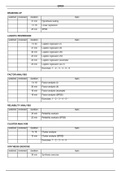Notes de cours
Business Research Methods (MBA - KUL) - A. De Ridder & R. Berlinschi
- Établissement
- Katholieke Universiteit Leuven (KU Leuven)
Content: Logistic regression analysis, factor analysis, reliability analysis, cluster analysis.
[Montrer plus]




